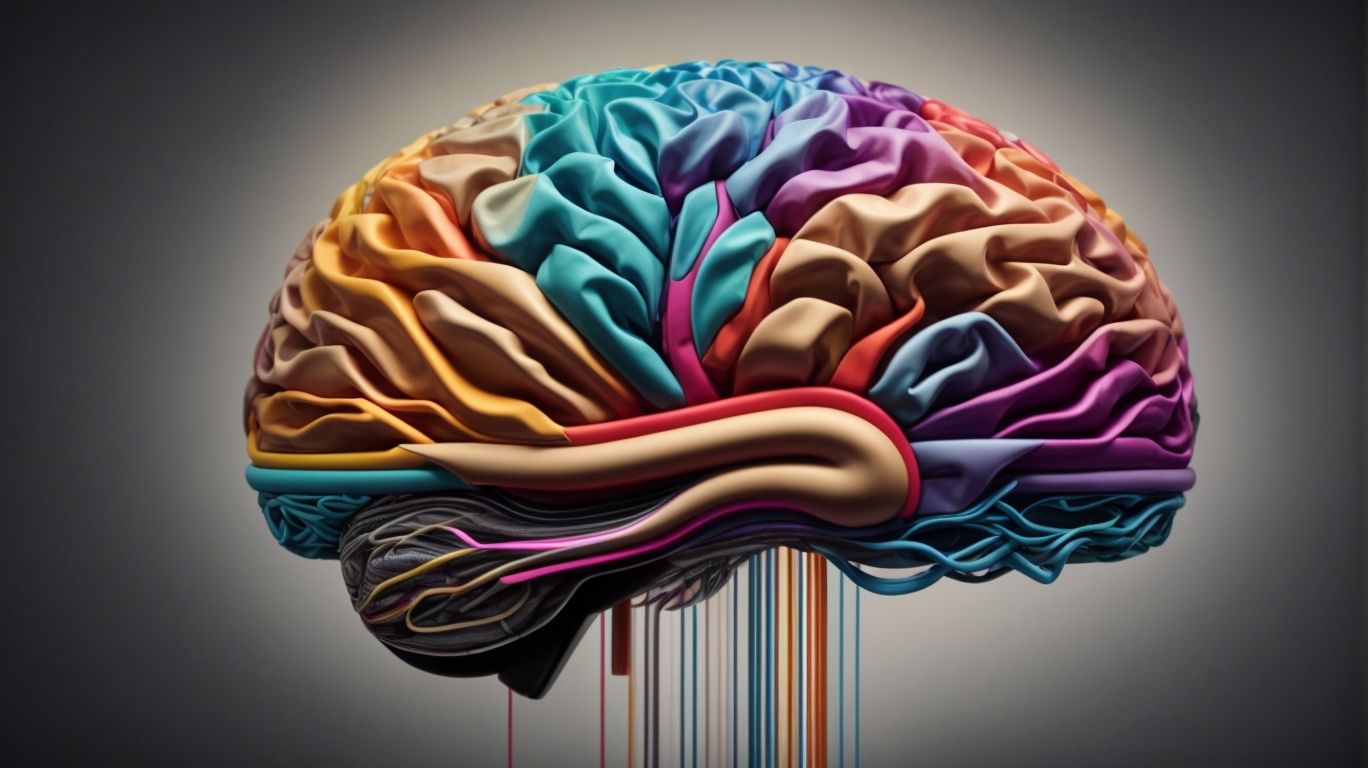Have you ever wondered how our brains process stimuli and generate responses? In this article, we will delve into the fascinating world of stimulus and response in psychology. From the different types of stimulus and response, to the factors that influence them and their effects on behavior, we will explore how these processes work together.
We will discuss how stimulus and response can be used to change behavior through techniques such as reinforcement and punishment. Join us on this journey to understand the intricacies of human behavior.
Contents
- 1 What Is Stimulus and Response?
- 2 How Do Stimulus and Response Work Together?
- 3 What Are the Different Types of Stimulus and Response?
- 4 What Are the Factors That Influence Stimulus and Response?
- 5 What Are the Effects of Stimulus and Response on Behavior?
- 6 How Can We Use Stimulus and Response to Change Behavior?
- 7 Frequently Asked Questions
- 7.1 What is stimulus in psychology?
- 7.2 How does the brain process stimuli?
- 7.3 What is the difference between positive and negative stimuli?
- 7.4 Can stimuli affect our behavior?
- 7.5 What is the role of conditioning in stimulus and response?
- 7.6 How does the study of stimulus and response relate to human behavior?
What Is Stimulus and Response?
Stimulus and response refer to fundamental concepts in psychology and behaviorism, where a stimulus is any environmental event that triggers a response in an organism.
Stimulus can be anything from a sound, a smell, a sight, or even a memory that prompts a reaction from the individual. In the world of psychology, responses are the reactions or behaviors that occur as a direct result of those stimuli. This cause-and-effect relationship is central to understanding classical conditioning, a concept famously studied by Ivan Pavlov. His experiments with dogs demonstrated how pairing a bell ringing (the stimulus) with food (another stimulus) resulted in the dogs salivating (the response) even when the food was removed.
How Do Stimulus and Response Work Together?
Stimulus and response work in tandem to form associations in an organism’s learning process, where the stimulus triggers a response that becomes linked through repeated exposure and reinforcement.
This interconnected relationship plays a pivotal role in associative learning, a fundamental concept in behavioral psychology. In associative learning, organisms establish connections between environmental cues and behavioral reactions. Through this process, the brain learns to predict outcomes based on prior experiences, shaping future responses.
These associations are not solely based on simple cause-effect relationships but are influenced by cognitive factors and the context in which the stimuli are presented. By understanding how stimuli elicit responses and how these associations are formed, researchers gain valuable insights into the intricate workings of learning processes.
What Are the Different Types of Stimulus and Response?
Various types of stimulus-response relationships exist, including classical conditioning, operant conditioning, and observational learning, each explaining distinct mechanisms of behavior acquisition.
In classical conditioning, a neutral stimulus becomes associated with a meaningful stimulus to elicit a specific response. For example, in Pavlov’s famous experiment, a bell (neutral stimulus) was paired with food (meaningful stimulus) to make dogs salivate in response to the bell alone.
Operant conditioning involves reinforcement or punishment to strengthen or weaken behaviors. Skinner demonstrated this by rewarding rats with food (reinforcement) when they pressed a lever, increasing the lever-pressing behavior.
Observational learning, as proposed by Bandura, emphasizes the role of social interactions in behavior acquisition. Children imitating aggression they observed in a model highlights this type of learning.
Classical Conditioning
Classical conditioning, pioneered by Ivan Pavlov through his renowned experiments with dogs, posits that a neutral stimulus can evoke a conditioned response when paired with an unconditioned stimulus.
This groundbreaking theory stems from Pavlov’s classic dog experiment, where he rang a bell (neutral stimulus) before feeding the dogs (unconditioned stimulus), eventually leading the dogs to salivate (conditioned response) at the sound of the bell alone. The key components in this process are the conditioned stimulus (bell) and the unconditioned stimulus (food), which elicit the conditioned and unconditioned responses respectively. Through repeated pairings of these stimuli, the dog learned to associate the bell with food, demonstrating the fundamental principle of associative learning in classical conditioning.
Operant Conditioning
Operant conditioning, a cornerstone of behaviorism developed by B.F. Skinner, focuses on how behaviors are shaped by consequences, where reinforcement or punishment influences the likelihood of behavior repetition.
Skinner’s contributions to the field of psychology revolutionized our understanding of human behavior. He introduced the concept of the law of effect, which states that behaviors followed by positive consequences are more likely to be repeated. Through his research, Skinner highlighted the power of reinforcement in reinforcing desired behaviors and the use of punishment to decrease unwanted ones. By manipulating these consequences, individuals can be guided towards making specific behavioral choices, demonstrating the significant impact of environmental contingencies on shaping behavior.
Observational Learning
Observational learning, as proposed by Albert Bandura through social learning theory, emphasizes how individuals acquire new behaviors by observing and imitating others within their environment.
Bandura’s research on social learning highlighted the crucial role of observational learning in shaping behavior. He conducted numerous experiments to demonstrate how individuals model behavior they witness around them, showing that learning outcomes are not only influenced by direct experiences but also by observing others. Through his studies, Bandura emphasized that cognitive processes played a significant role in this form of learning, suggesting that individuals not only mimic actions but also interpret and organize information they observe.
What Are the Factors That Influence Stimulus and Response?
Numerous factors influence the relationship between stimuli and responses, including biological predispositions, environmental cues, and cognitive processes that modulate organismic reactions.
Biological predispositions encompass the genetic foundations that individuals inherit, impacting their tendencies towards certain stimuli. Environmental cues, on the other hand, refer to the external influences such as upbringing, culture, and social interactions that shape an individual’s responses. Cognitive processes play a vital role in filtering and interpreting stimuli, mediating the organism’s reactions.
Biological Factors
Biological factors play a crucial role in stimulus-response connections, influencing an organism’s susceptibility to conditioning processes and the acquisition of learned behaviors.
One fundamental aspect of this relationship is the neurobiological mechanisms that come into play during the learning process. The brain’s intricate network of neurons and neurotransmitters orchestrates the encoding and retrieval of information related to various stimuli.
Additionally, genetic predispositions can significantly shape an individual’s propensity to associate specific stimuli with certain responses, affecting the efficacy of classical conditioning paradigms. Understanding how genetic influences intersect with external stimuli opens a window into comprehending the nuances of behavior modification techniques.
Environmental Factors
Environmental factors, such as external stimuli and situational contexts, significantly influence an individual’s responses to conditioning processes, as demonstrated in studies like the Little Albert experiment.
These environmental cues play a crucial role in shaping how individuals associate stimuli with responses. For instance, imagine a person who always receives a reward after performing a particular task in a specific setting. Over time, they will start to expect the reward whenever they engage in that task in that environment, showcasing how external stimuli influence behavior.
- The impact of context in conditioning experiments cannot be overlooked. In behavioral studies, researchers carefully manipulate the environment to understand how different settings affect behavior. This emphasizes the intricate relationship between external cues and behavioral responses.
Cognitive Factors
Cognitive factors, including mental processes and individual differences, play a pivotal role in how stimuli are perceived, interpreted, and integrated into an individual’s behavioral responses.
Understanding the intricate workings of cognitive processes provides valuable insights into the mechanisms behind learning and behavior. When an individual encounters a stimulus, their perception is not a simple reaction but rather a complex interplay of their cognitive functions. These mental processes involve attention, memory, language, problem-solving, and decision-making, which collectively shape how stimuli are processed and ultimately influence behavioral responses.
Individual differences in cognitive abilities, personality traits, and past experiences can significantly alter the outcomes of conditioning and learning processes. For instance, individuals with high levels of cognitive flexibility might adapt more readily to new stimuli, whereas those with cognitive biases may exhibit different response patterns.
What Are the Effects of Stimulus and Response on Behavior?
Stimulus-response relationships have profound effects on behavior, shaping learned behaviors, triggering emotional responses, and contributing to the formation of habits and routines.
When an individual encounters various environmental stimuli, their brain processes these inputs, leading to specific behaviors in response. Through the principles of associative learning, the mind forms connections between stimuli and responses, creating patterns that can influence future actions.
Emotional reactions to stimuli are a crucial aspect of this process, as they can strengthen or weaken certain behaviors based on past experiences. Positive stimuli tend to reinforce behaviors, while negative stimuli may lead to avoidance or alteration of actions.
Over time, repetitive exposure to specific stimuli and responses solidifies these patterns, forming habitual behaviors that are often automatic and ingrained in daily routines.
Learned Behaviors
Learned behaviors encompass a spectrum of responses acquired through exposure to environmental stimuli, reflecting the adaptive nature of organisms and their ability to modify behavior based on experiences.
These behaviors are often shaped through various forms of conditioning, such as operant conditioning where organisms learn to associate their actions with consequences. By understanding how environmental cues influence behavior, scientists can decipher the intricate mechanisms behind behavioral changes.
Organisms exhibit remarkable malleability, adapting their responses to different stimuli over time. This adaptability showcases the dynamic interplay between an organism and its surroundings, highlighting the ever-evolving nature of behavior in response to external influences.
Emotional Responses
Emotional responses to stimuli are central in understanding behavior, as demonstrated in experiments like the Little Albert study conducted by John B. Watson, showcasing how emotions shape learned reactions.
Emotional conditioning is a process where individuals learn behaviors through association with emotional responses. This process, rooted in classical conditioning principles, illustrates how our feelings can influence our actions and decision-making. The Little Albert experiment is a classic example of how negative emotions, such as fear, can be conditioned to specific stimuli. Watson’s pioneering work paved the way for understanding the intricate relationship between emotional responses and learned behaviors, contributing significantly to the field of psychology.
Habit Formation
Habit formation involves the automaticity of responses to familiar stimuli, where repeated exposure and reinforcement lead to the establishment of routine behaviors governed by cognitive and environmental factors.
Habits are essentially automatic responses that occur without much conscious thought or effort, a product of our brain’s ability to create neural shortcuts for frequently encountered situations. Cognitive processes play a crucial role in this mechanism, influencing the way we perceive and react to our surroundings. Through the process of associative learning, where certain stimuli trigger specific responses, our brains form connections that strengthen habitual behaviors.
- Environmental cues and contexts also contribute significantly to our routine responses, acting as triggers that prompt us to engage in familiar actions.
By understanding these cognitive factors and environmental influences, we can better comprehend the intricacies of habit formation and potentially modify existing habits.”
How Can We Use Stimulus and Response to Change Behavior?
Stimulus-response techniques offer effective mechanisms for behavior modification, including positive reinforcement, negative reinforcement, punishment, and extinction, all shaping behavioral outcomes through strategic interventions.
Operant conditioning, a fundamental concept in behaviorism, is based on the premise that behavior is influenced by its consequences.
Reinforcement, both positive and negative, enhances the likelihood of a behavior being repeated, while punishment decreases that likelihood.
For instance, giving a treat (positive reinforcement) to a dog after it performs a trick will encourage the dog to repeat the trick in the future.
In contrast, removing an unpleasant task (negative reinforcement) after completing a chore can increase the likelihood of the chore being done promptly.
On the other hand, a child’s tantrums might decrease (punishment) if they no longer receive attention for them.
Extinction involves eliminating a behavior by withholding any form of reinforcement, making the behavior less likely to occur over time.
Positive Reinforcement
Positive reinforcement, a key tenet of operant conditioning postulated by Skinner, involves rewarding desired behaviors to increase their occurrence, often implemented in settings like the operant conditioning chamber.
This principle was developed by renowned psychologist B.F. Skinner, who is considered a pioneer in the field of behaviorism. Skinner’s work laid the foundation for understanding how behavior can be modified through reinforcement techniques.
Positive reinforcement works by presenting a motivating stimulus to reinforce a desired behavior, making it more likely to be repeated in the future. For example, in educational settings, teachers use praise and rewards to encourage students to participate actively in class discussions.
Negative Reinforcement
Negative reinforcement, contrary to punishment, involves removing aversive stimuli to reinforce desired behaviors, a concept central to Skinner’s behaviorism and the role of intrinsic reinforcers in behavioral conditioning.
In operant conditioning, negative reinforcement is a key principle where the removal of an unpleasant stimulus increases the likelihood of a certain behavior recurring. This differs from punishment mechanisms, where an unwanted behavior is suppressed through the application of a negative consequence. Skinner, a prominent figure in behavioral psychology, emphasized the importance of reinforcement in shaping behavior, highlighting the law of effect which states that behaviors followed by positive outcomes are more likely to be repeated.
Skinner’s research delved into how primary reinforcers such as food and water could be used to modify behavior, a concept foundational to understanding reinforcement theory.
Punishment
Punishment, a behavior modification technique in operant conditioning, entails applying consequences to reduce the likelihood of undesired behaviors, a concept integral to Skinner’s work in the operant conditioning chamber.
Skinner’s approach to punishment was influenced by the Law of Effect, which posits that behaviors are shaped by their consequences. In operant conditioning, punishment aims to decrease the probability of an unwanted behavior through the introduction of aversive stimuli or the removal of positive stimuli. Examples of punishment strategies include time-outs, reprimands, and fines. Negative reinforcement, a related concept, involves removing aversive stimuli to increase the likelihood of a desired behavior. Understanding the role of punishment in behavior change is crucial for shaping behavior effectively.
Extinction
Extinction refers to the diminishing of a conditioned response when a previously learned stimulus no longer elicits the expected behavior, often accompanied by phenomena like spontaneous recovery and generalization.
This process occurs when the once-rewarded behavior no longer produces the desired outcome, leading to the gradual fading of the response.
Spontaneous recovery, on the other hand, is the reappearance of a previously extinguished response after a period of rest. It showcases how learned behaviors can resurface even after being seemingly eradicated.
Generalization in extinction processes involves the transfer of the extinction response to similar stimuli, broadening the scope of learned behavior modifications.
Frequently Asked Questions
What is stimulus in psychology?
Stimulus in psychology refers to any event or object that elicits a response from an individual. It can be a physical sensation, thought, or environmental cue that triggers a reaction.
How does the brain process stimuli?
The brain processes stimuli through a complex network of neurons and neurotransmitters. When a stimulus is detected, it is relayed to the brain where it is interpreted and a response is generated.
What is the difference between positive and negative stimuli?
Positive stimuli are events or objects that elicit pleasant or desirable responses, while negative stimuli elicit unpleasant or undesirable responses. The brain processes these stimuli differently, resulting in different emotional and behavioral responses.
Can stimuli affect our behavior?
Yes, stimuli can have a significant impact on our behavior. They can influence our thoughts, emotions, and actions, and can even shape our beliefs and attitudes.
What is the role of conditioning in stimulus and response?
Conditioning is a key factor in understanding the relationship between stimulus and response. It involves learning to associate a particular stimulus with a specific response, either through classical or operant conditioning.
How does the study of stimulus and response relate to human behavior?
Exploring the psychology of stimulus and response is crucial in understanding human behavior. It allows us to understand how external factors influence our thoughts, emotions, and actions, and how we can modify or control our responses to various stimuli.



